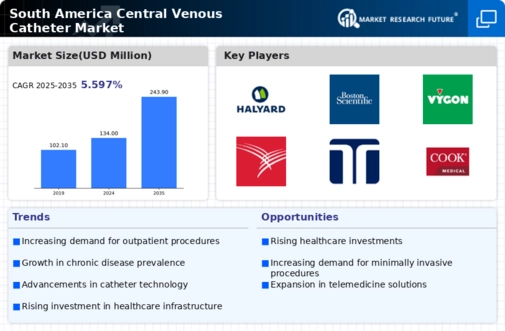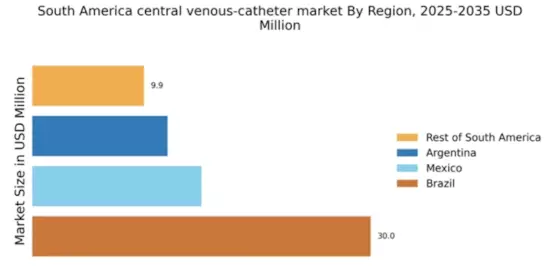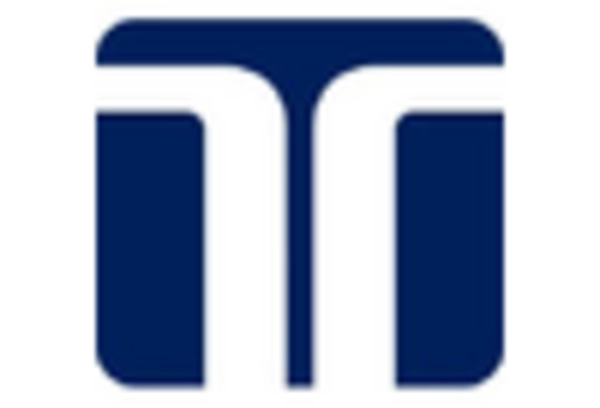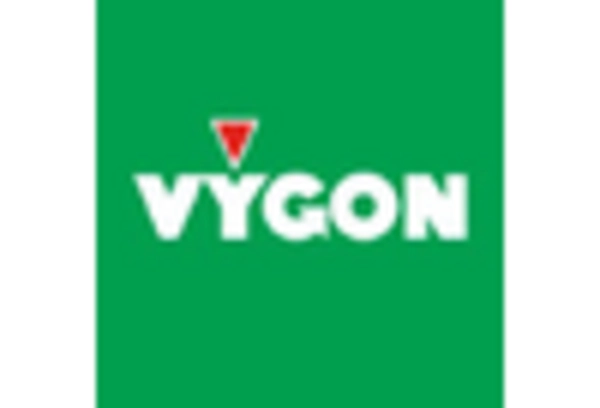Advancements in Medical Technology
Technological innovations in the medical field are significantly influencing the central venous-catheter market in South America. The introduction of advanced catheter designs, such as those with antimicrobial properties and improved biocompatibility, enhances patient safety and comfort. These innovations are likely to reduce the incidence of catheter-related infections, which have been a major concern in healthcare settings. As hospitals and clinics increasingly adopt these advanced technologies, the market is projected to experience substantial growth. Additionally, the integration of digital health solutions, such as remote monitoring systems, is expected to streamline catheter management, further driving the demand for central venous catheters in the region.
Rising Awareness of Patient Safety
There is a growing emphasis on patient safety and quality of care in South America, which is significantly impacting the central venous-catheter market. Healthcare providers are increasingly prioritizing the use of safe and effective medical devices to minimize complications associated with intravenous therapy. This heightened awareness is leading to the adoption of best practices and guidelines for catheter insertion and maintenance, which in turn drives the demand for high-quality central venous catheters. Furthermore, educational initiatives aimed at healthcare professionals are likely to enhance knowledge regarding the importance of using advanced catheters, thereby fostering market growth. As patient safety becomes a central focus, the market for central venous catheters is expected to expand.
Expansion of Home Healthcare Services
The rise of home healthcare services in South America is emerging as a significant driver for the central venous-catheter market. With an increasing number of patients opting for home-based care, there is a growing need for medical devices that facilitate safe and effective treatment in non-hospital settings. Central venous catheters are essential for patients requiring long-term intravenous therapy at home, such as those undergoing chemotherapy or long-term antibiotic treatment. This trend is likely to boost the demand for central venous catheters as healthcare providers adapt to the changing landscape of patient care. As home healthcare services continue to expand, the market for central venous catheters is expected to witness substantial growth.
Increasing Incidence of Chronic Diseases
The rising prevalence of chronic diseases in South America is a crucial driver for the central venous-catheter market. Conditions such as cancer, diabetes, and cardiovascular diseases necessitate long-term intravenous therapy, thereby increasing the demand for central venous catheters. According to recent health statistics, chronic diseases account for approximately 70% of all deaths in the region, highlighting the urgent need for effective treatment options. This trend is likely to propel the central venous-catheter market as healthcare providers seek reliable solutions for patient management. Furthermore, the growing aging population, which is more susceptible to these conditions, is expected to further amplify the demand for central venous catheters, creating a robust market environment.
Growing Investment in Healthcare Infrastructure
The expansion of healthcare infrastructure in South America is a pivotal factor for the central venous-catheter market. Governments and private entities are investing heavily in modernizing hospitals and clinics, which includes upgrading medical equipment and facilities. This investment is expected to enhance the availability and accessibility of advanced medical technologies, including central venous catheters. For instance, recent reports indicate that healthcare spending in South America is projected to grow by approximately 5% annually, creating a favorable environment for market expansion. As healthcare facilities improve, the demand for effective treatment options, such as central venous catheters, is likely to increase, thereby driving market growth.


















Leave a Comment